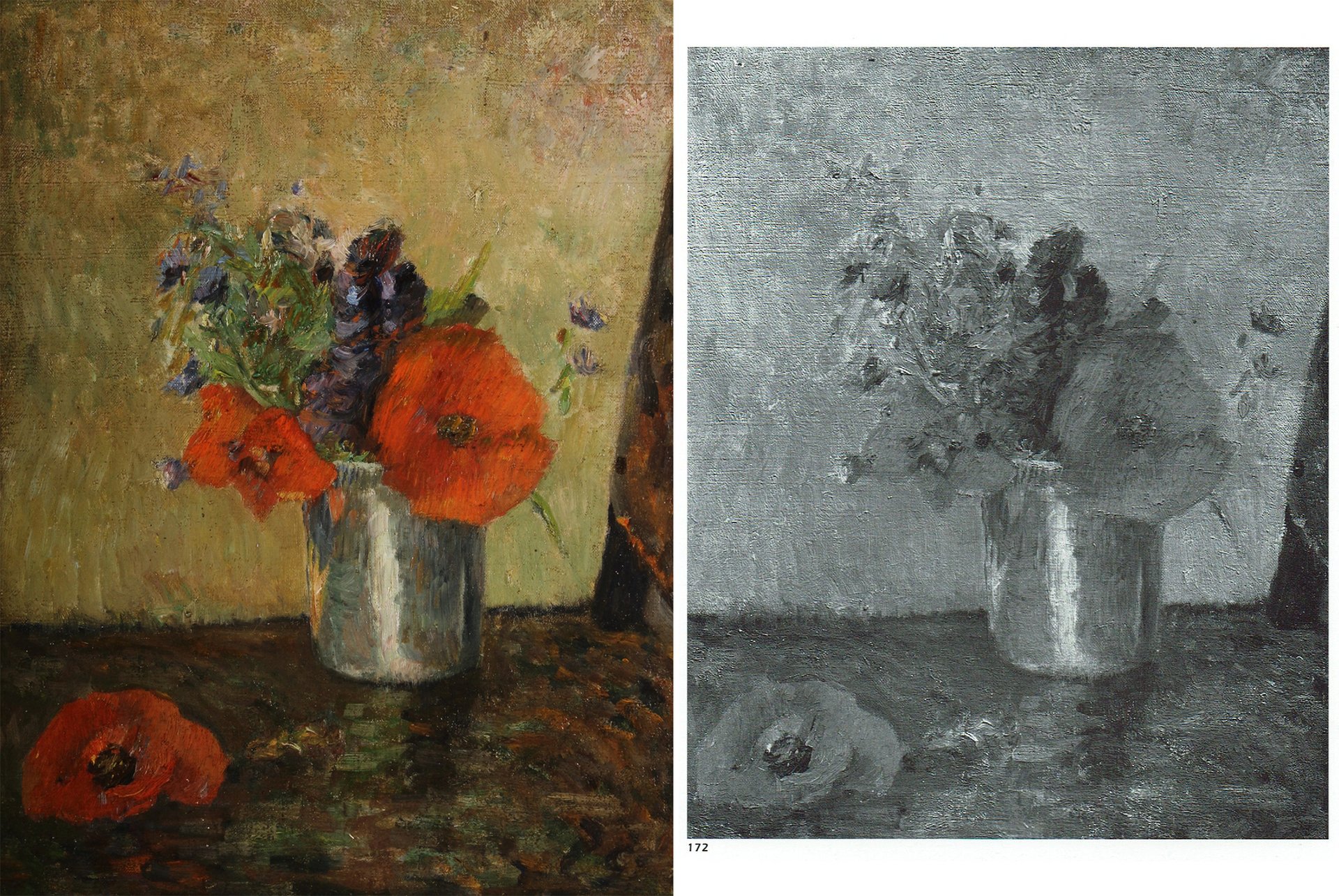A still-life of flowers by Paul Gauguin—which hung for 30 years in the home of a retired Manhattan antiques dealer, who did not know it was by the artist—has been rediscovered by a Connecticut auction house. Authenticated by the Paris-based Wildenstein Institute, the painting “certainly appears” to be the long-lost still-life Summer Flowers in a Goblet listed in the artist’s catalogue raisonné, says the Gauguin specialist, Sylvie Crussard. The work is now due to be sold on 29 June at Litchfield County Auction, with an estimate of $800,000 to $1.2m.

After the unidentified painting was consigned to Litchfield County Auctions, their specialist spotted a Sotheby’s label on the back of the frame that suggested it was by Paul Signac. However, the frame was too large for the canvas, and it appears to have been recycled after once being used on a work by Signac. The auction house’s founder Weston Thorn then deciphered a “PG” monogram on the painting and identified it as Gauguin’s.
The still-life matches a picture recorded as no. 172 in the 2002 Wildenstein catalogue raisonné, but this is illustrated with a black-and-white photograph taken in New York in the 1940s, which made it difficult to name the flowers. Seeing it in colour, the large flowers are certainly poppies (possibly cultivated ones), the tall central blossom could well be a lupine, and smaller blue ones are probably cornflowers.

All these would bloom in June or July. The Wildenstein catalogue dates the picture to 1885 on stylistic grounds, including it in a section of works painted in Denmark. Gauguin was in Copenhagen with his wife Mette until late June, when he left because of rows with her family. After a few days in Paris, he spent the summer in Dieppe. The flowers are more likely to have bloomed in Dieppe rather than Copenhagen, so the new colour image points towards the picture having been done in France. Gauguin painted two other flower still-lifes in Dieppe, of dahlias and primroses.
Gauguin’s three months in Dieppe is the most mysterious chapter in his career. It is unclear where he stayed, although he did know an Englishwoman who owned a chateau. Gauguin also claims to have gone on a short trip to London to meet a Spanish revolutionary.
The rediscovered still-life was probably sold after the artist’s death. The diary of the Paris dealer Ambroise Vollard records that in 1907 he bought a picture of “blue flowers” from Mette. It then seems to have gone to an unidentified Paris collector. In 1950, the still-life was acquired by a New York owner, Gilbert S. Kahn, the nephew of the collector and diplomat Walter Annenberg. The unnamed Manhattan antiques dealer who has consigned the painting to Litchfield bought it as an unidentified work in the mid 1980s. He hung it in his apartment simply because he thought it was a pretty picture.


